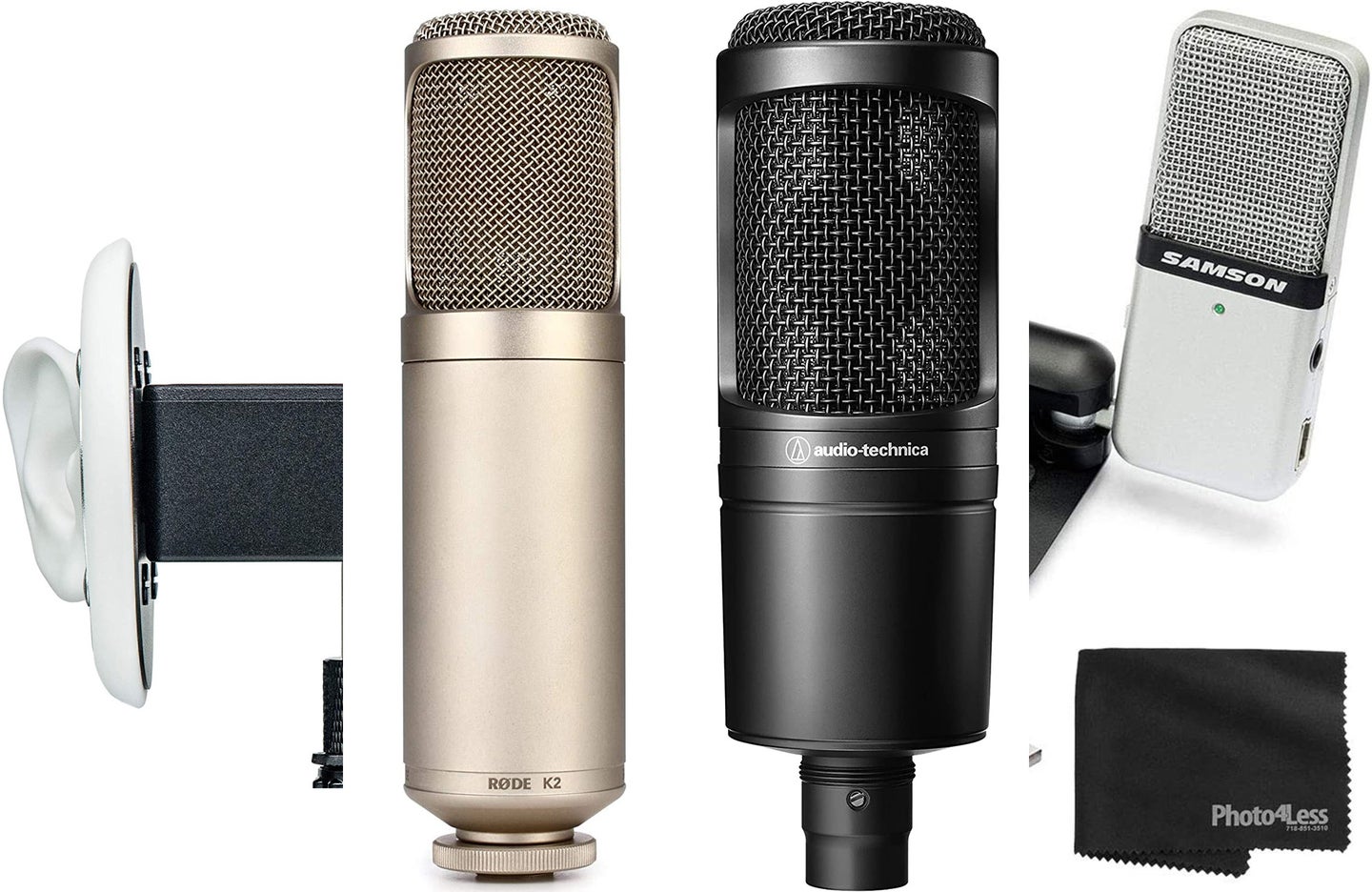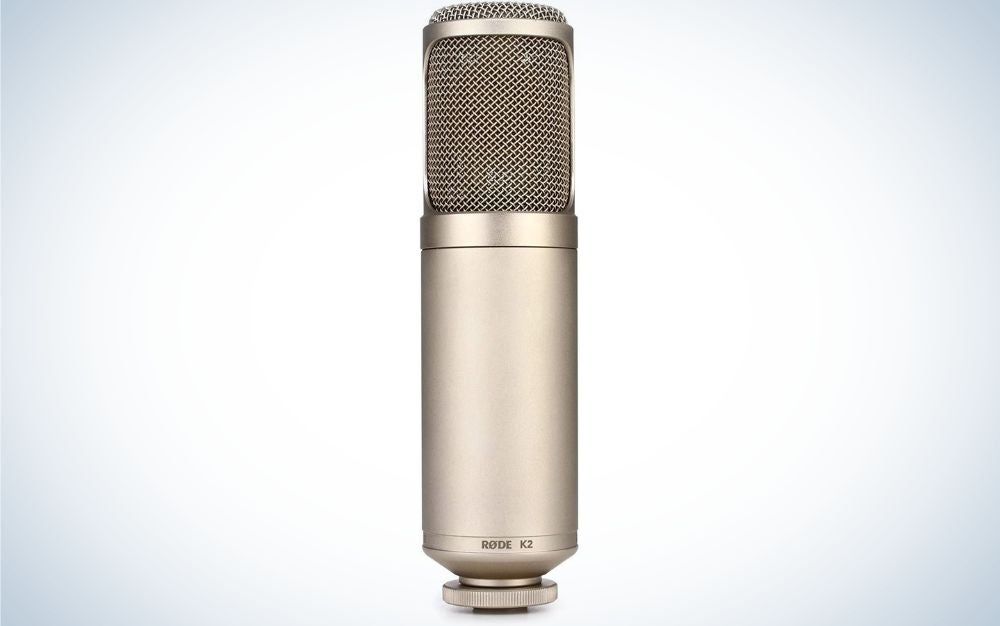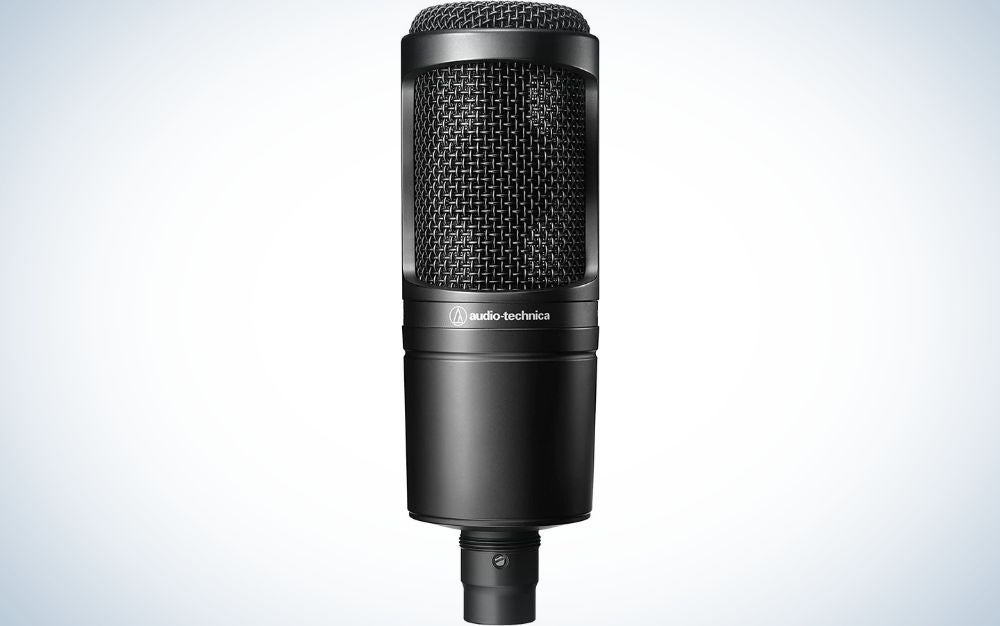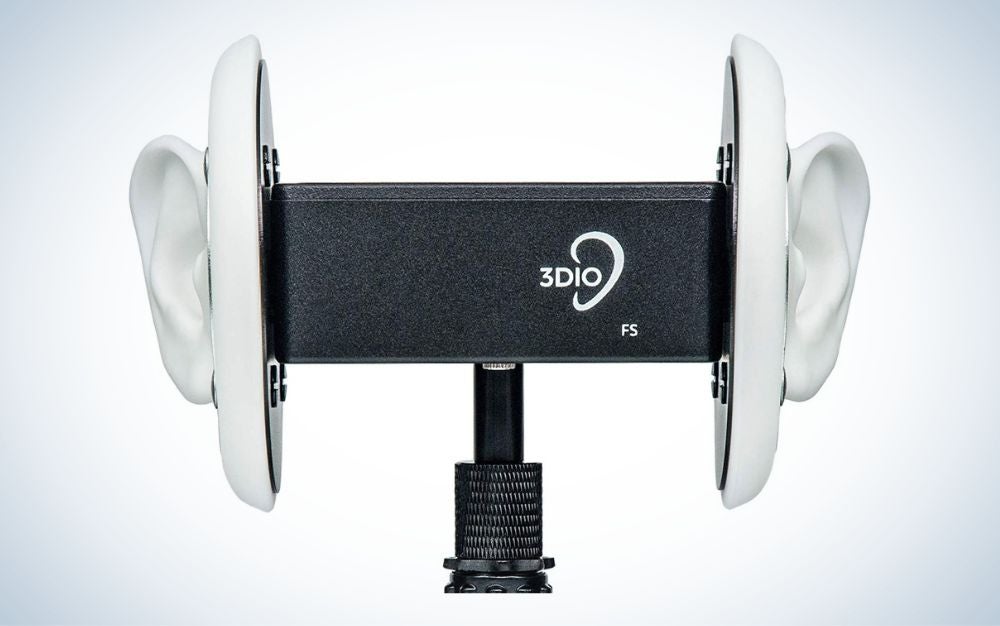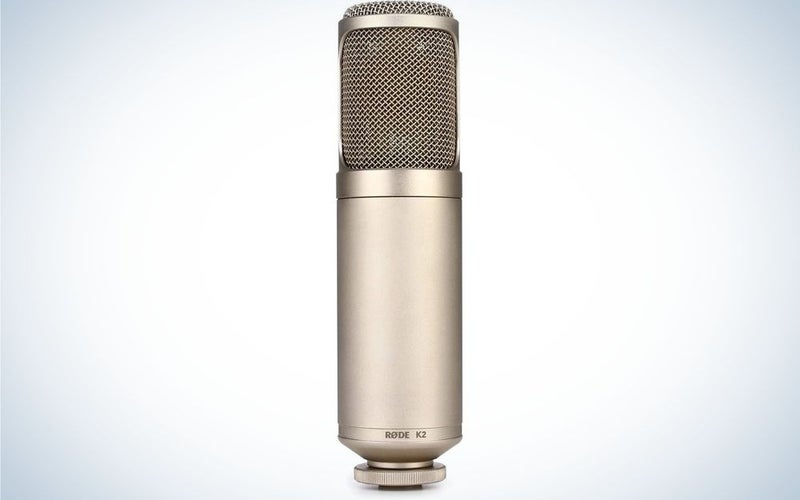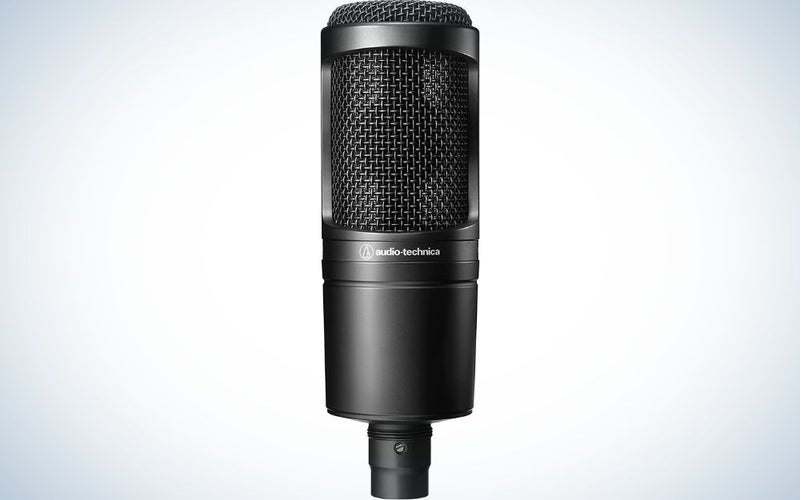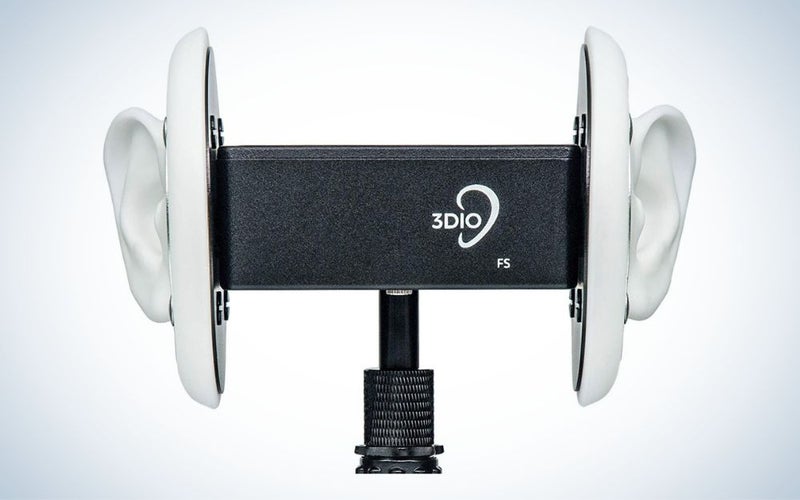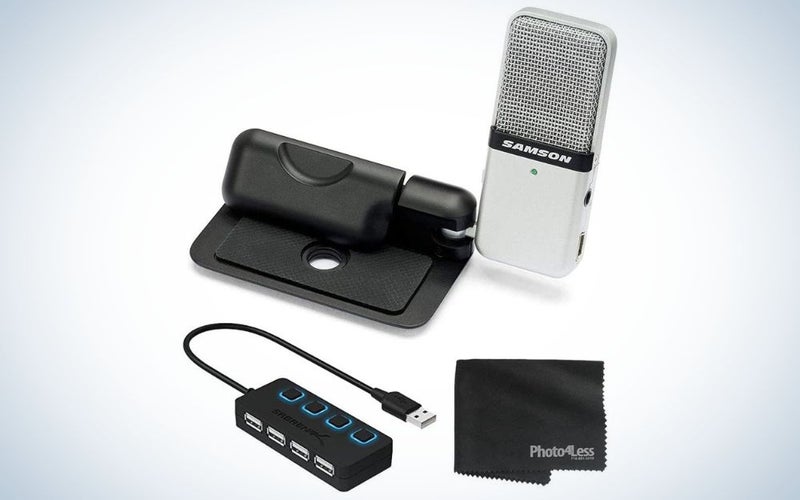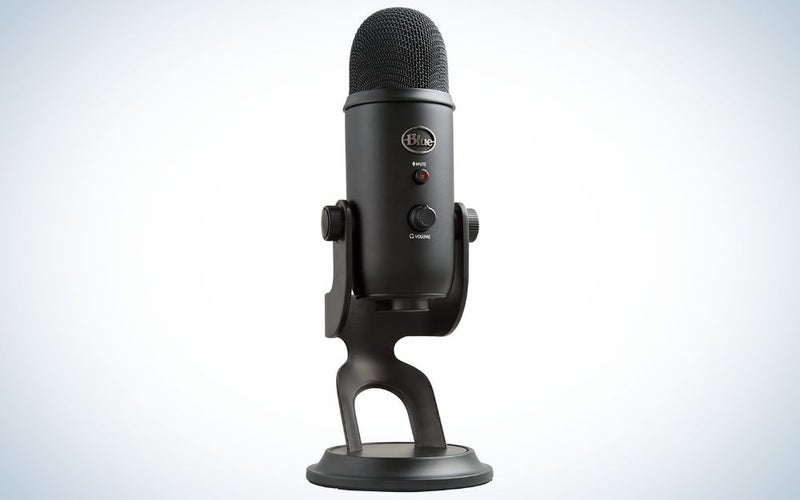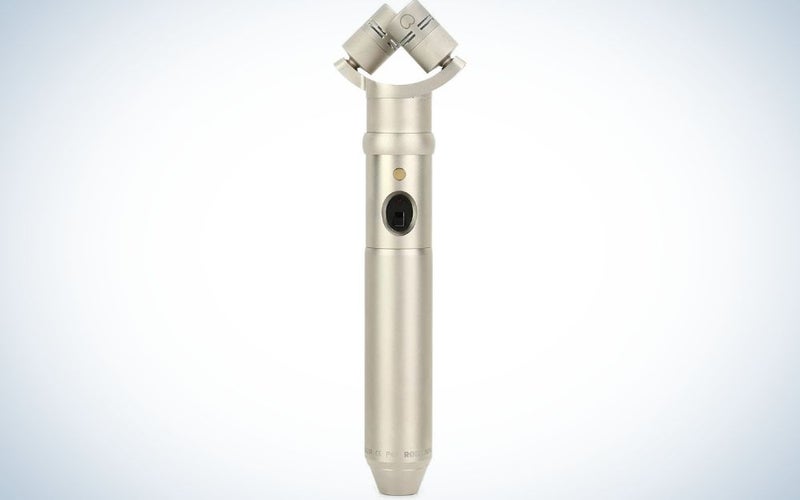We may earn revenue from the products available on this page and participate in affiliate programs. Learn more ›
There aren’t many performances more dependent on the microphone than ASMR videos, which is why it’s critical to have a quality ASMR microphone. Creators in this space use their gear choices and production techniques to create an audio fingerprint that can form a huge part of their brand and identity. While any quality vocal microphone can trigger the “autonomous sensory meridian response,” viewers choose and often stick with creators because of particular audio characteristics in their recordings.
Selecting the right microphone to use in your videos can accentuate the facets of the recording you want to highlight. So whether you’re looking for high-quality spatial recordings or an easy-to-use mic for your smartphone videos, this article will help you find the best ASMR microphones for elevating your content.
- Best overall: Rode K2
- Best budget: Audio-Technica AT2020
- Best binaural: 3Dio FS Binaural Microphone
- Best mini: Samson Go
- Best USB: Blue Yeti
- Best stereo: Rode NT4
How we picked the best ASMR microphones
When considering a broad topic such as ASMR video creation, we feel it is essential to look at a wide range of large diaphragm, binaural and stereo microphones. Narrowing down the field to present these in a single article has been challenging, so we focused on budget to mid-range options, highlighting the use-case for each microphone. In addition, pleasing high-frequency response, user experience, and visual design have been taken into account to produce a diverse collection for you to consider for your ASMR videos.
The best ASMR microphones: Reviews & Recommendations
Best overall: Rode K2
Rode
Why it made the cut: You’ll get silky smooth delivery of higher frequencies and overall warm sound from this real valve microphone.
Key features:
- Type: Condenser
- Connection: XLR (separate power supply included)
- Pattern: Continuously variable between omnidirectional, cardioid, figure-of-eight
Pros
- Highly detailed, valve warmth at an affordable price
- Flattering and smooth-sounding high end
- Classic styling for both microphone and included accessories
Cons
- Separate power supply is bulky
When considering large diaphragm condenser microphones for ASMR, there is a fine line between tingly and harsh-sounding. Vocal microphones typically focus on a balanced and accurate sound across the full audio range, and in many ways, the Rode K2 provides this. Where it excels against its competition is in the pleasing warmth in its high-frequency delivery. The vintage-style components of valve microphones like the K2 might not be as clinically accurate as their modern-day counterparts. But the glass tube at their heart provides a round and polished signal that is perfect for ASMR videos.
The K2’s one-inch gold-sputtered diaphragm comes housed in a timeless tube-shaped metal body. In addition, it is supplied with a heavy-duty, cats-cradle style shock mount, essential for a microphone weighing in at over a pound and a half.
Valve microphones often require external power supplies, and the K2 is no different here. The large power supply included with the microphone is a bulky but functional affair. And it also houses a sturdy rotary control that seamlessly sweeps between the different microphone patterns. This control lets you dial in the response you need for your ASMR performance if you use both tools and your voice in your videos.
While this might not be the easiest of our picks to set up, the warm high-frequency response is worth the time investment and will wow any ASMR audience.
Best budget: Audio-Technica AT2020
Audio-Technica
Why it made the cut: It has a crisp and highly detailed response in a simple, affordable package.
Key features:
- Type: Condenser
- Connection: XLR (phantom power required), also available as a USB mic
- Pattern: Cardioid
Pros
- Detailed audio quality well above its price-point
- Pleasing high-frequency output
- Responds well to a wide range of sources
Cons
- At this price point, not a lot
While other budget microphone brands add features to their models, Audio-Technica has achieved a brilliant simplicity in the design of the AT2020. Available in black, white, and chrome finishes, the sleek, slightly tapered body houses an incredibly versatile 5/8-inch capsule. The sound, while neutral, is pleasantly airy and has a clarity seldom found at this price point. It’s easy to see how this microphone has fast become a favorite of home studios.
In terms of features, the AT2020 has no built-in controls or selectable patterns. The lack of controls isn’t a bad thing, though, as there is nothing for less experienced users to get wrong. The cardioid pattern responds well to all kinds of audio signals and is forgiving when it comes to positioning and distance from the sound source.
What this microphone lacks in switches and gubbins, it more than makes up for in clear, detailed audio with open-sounding high frequencies perfect for ASMR content creators.
Best binaural: 3Dio Free Space
3DIO
Why it made the cut: The 3Dio Free Space is an affordable option for binaural recordings in a compact, easy-to-use package.
Key features:
- Type: Binaural, using two matched condenser capsules
- Connection: ⅛ inch stereo jack
- Pattern: Omnidirectional stereo image
Pros
- True binaural recording
- Compact, self-contained stereo microphone
- One of few options to include molded ears
Cons
- Highly specialized microphone, not suitable for traditional recordings
- Visual design could be refined
It should go without saying that the Free Space microphone is a tool with a specific and very narrow application. That said, the audio captured is highly effective at providing a stereo image that tricks the listener’s brain into a sense that they are in the ASMR performer’s studio.
Aside from the human-like ears, the design is rather boxy and utilitarian. Still, everything is laid out clearly with a standard microphone thread alongside the stereo jack connection on the bottom of the microphone. In addition, there are two large toggle switches on the back. One is for power and the other for a bass roll-off that filters out frequencies below 160Hz, providing a cleaner signal, more akin to what you’d experience in person.
Unsurprisingly, the market for specialty binaural microphones with molded prosthetic ears isn’t flooded with affordable options for ASMR creators. Thankfully, 3Dio takes pride in the immersive audio tools they produce. Its Free Space microphone is a great option for anyone looking to venture into the world of binaural ASMR videos.
Best mini: Samson Go
Samson
Why it made the cut: A full range of features and well-thought-out design keep this veteran mini microphone relevant for ASMR.
Key features:
- Type: Condenser
- Connection: Mini USB
- Pattern: Cardioid / Omni
Pros
- User-friendly design
- Plug and play with Mac and Windows
- Fully featured USB mic in a small package
- Travel pouch and stand included
Cons
- Limited external controls on microphone
The small, rectangular body of the Samson Go at first seems unremarkable. But a lot of thought has gone into this design, allowing it to stand the test of time. The microphone is attached to a metal clip, almost the same size as the microphone. This clip is intended to connect to a laptop screen but doubles as a desk stand. And it has a threaded mic stand adapter built in.
This kind of adaptable user focus is carried over to the audio features. The single switch on the microphone’s body allows you to choose between two cardioid patterns, one with a 10 dB drop in case audio is clipping and an omnidirectional mode. The other side of the microphone houses two connectors, one for USB and the other for attaching headphones.
The audio supplied by the Samson Go is crisp and clear. It’s tailored toward speech, with a pleasing high end that works well for ASMR duties. While some of the features, like the mini USB connection, could use an update, the overall design and audio quality are hard to fault at this price point.
Should you want something a bit different, another small microphone option is wireless lavalier microphones.
Best USB: Blue Yeti
Logitech for Creators
Why it made the cut: Excellent stereo and mono patterns alongside plug-and-play ease come at a competitive price.
Key features:
- Type: Condenser
- Connection: USB
- Pattern: Multi-pattern Cardioid / Bidirectional / Omnidirectional / Stereo
Pros
- Frequency profile well suited to ASMR videos
- Focus on ease of use with plug and play connection
- Clear controls spread across the front and back of the microphone
- Stereo mode for spatial recording
Cons
- USB only
When considering USB microphones for any application, it’s hard to ignore the feature list and build quality found in the Blue Yeti. This is especially true for ASMR video producers, as the Yeti doubles as both a great large diaphragm condenser mic and also a very capable stereo microphone.
Already popular with ASMR creators, its sensitivity and frequency response are perfect for the genre. The slight dip found in bass frequencies and the high-end bump make performances sound crisp and airy. In addition, the microphone’s high sensitivity means that you can achieve a range of sounds at different distances to the microphone.
The heavy desk stand included with the Yeti is functional. But, most ASMR creators will probably want to invest in a separate, more adaptable mic stand. Luckily, the microphone features a standard thread on the bottom of the microphone. Controls for volume, pattern, and monitoring are spread between the front and back of the microphone and are clear and easy to use.
The packed features, audio profile, and plug-and-play usability of this model make the Blue Yeti easy to recommend.
Best stereo: Rode NT4
RØDE Microphones
Why it made the cut: The Rode NT4 provides studio-grade stereo audio without the fuss of setting up multiple microphones.
Key features:
- Type: Matched condenser capsules in X / Y array
- Connection: Stereo XLR or ⅛-inch mini-jack
- Pattern: Stereo Cardioid
Pros
- Works either with a battery or phantom power
- Studio-quality microphone that can be connected directly to a camera
- Excellent stereo image
Cons
- Requires stereo mic input
The most commonly used method of recording stereo audio in the studio is still to set up a pair of microphones, often in an X / Y pattern at 90 degrees of each other. This setup, however, requires two quality microphones with matched output, two mic stands, an audio interface with two inputs, and software that will stitch the output into one stereo track.
In the NT4, Rode has done the heavy lifting for us, providing two quality 1/2-inch capsules in one microphone. In addition, by including the option to power the NT4 using a battery, this mic can also deliver audio via a 1/8-inch mini-jack cable, perfect for plugging into a camera. To accommodate the battery, the body of this microphone is both wider and longer than a standard handheld microphone. But it comes with a sturdy clasp for mic stands, as well as a foam windshield and travel pouch.
Thanks to the X / Y pattern, recordings from this microphone are free from any phasing effects. They also don’t have any heightened room reflections that can sometimes creep into tracks from two separate microphones. The beautifully detailed stereo is perfect for ASMR artists that want to get close to the microphone for an immersive performance that doesn’t require additional setup.
Things to consider before buying a microphone for ASMR
Connection type
Most ASMR artists use a single microphone or stereo pair to create their videos. Some of this video genre’s greatest successes haven’t come from diverse technical equipment and innovative recording solutions. Instead, ASMR audiences seem to gravitate towards simplicity, repeatability, and consistency. With this in mind, USB microphones can provide a simple-to-use solution in a compact package within a setup that doesn’t need to grow.
The quality and features of USB microphones have vastly improved in recent years, with plenty of great options on the market. That said, most professional microphones designed for use in studios use an XLR connection. These microphones require a separate audio interface to pipe the audio into your computer or camera.
Purchasing another piece of gear to be able to use your microphone might not be an attractive proposition. But the enhanced definition and overall audio quality that a studio microphone and audio interface can bring to your recordings can truly elevate an ASMR video.
The microphone as a part of the performance
Some ASMR creators keep their microphones out of frame, while others prefer to make their interaction with the microphone part of their performance. This performative element could significantly change your requirements. For example, if you’re looking to tap or brush the microphone for ASMR effects, you’ll need a microphone with a texture that responds to this in a pleasing way. Likewise, if you’re looking to speak into different parts of the microphone to create stereo content, you’ll need a microphone that can deliver a stereo signal.
If you are also a vlogger on top of ASMR artist, check out these microphones for vlogging.
Trust the results
One of the greatest things about choosing audio gear is that there are great example recordings online of each microphone model. Plug in your favorite speakers or headphones and have a listen to different recordings. Many ASMR creators keep their microphone in the shot, so it’s easy to see what they’re using. Compare the results of different creators and trust what your ears are telling you.
FAQs
Q: How much should I spend on a microphone for ASMR videos?
How much you should spend on a microphone for ASMR videos depends on your needs and preferences. Our cheapest picks in this article provide great results at their price points. We usually warn against the false economies of going with ultra-budget options, as smartphones and camera microphones will often provide very similar results to the cheapest stand-alone microphones. That said, within the ASMR genre, the inclusion of a microphone in the frame is often part of the performance. If your budget doesn’t stretch to our picks, there might be a narrow case for starting with an even more inexpensive microphone, but audio quality really starts to suffer in this lower price range.
Q: What equipment do you need for ASMR videos?
If you choose to use a USB microphone, you don’t need a lot of equipment for ASMR videos. However, if you go with a studio microphone, you’ll need an XLR cable and audio interface.
Microphones sensitive enough to provide excellent audio for ASMR will also be sensitive to any vibrations or physical movement like footsteps in the room. A shock mount can be an excellent investment to avoid these unwanted noises. The cat’s cradle or spider mounts, as they are known, are the most popular and provide excellent physical isolation from vibrations.
Depending on the type of content you’re making, a pop screen could be beneficial and an inexpensive way to get rid of unwanted sibilance from your recordings. That said, some creators emphasize these same consonants to great effect.
Q: What types of microphone are best for ASMR?
You will often see microphones divided broadly between dynamic and condenser microphones. There’s no need to go into the technical differences between these microphones, but generally speaking, dynamic microphones are durable and great at handling loud noise sources like drums or guitar amplifiers. On the other hand, condenser microphones are much more sensitive and deliver a more detailed recording, but at the cost of handling loud noises poorly.
There are usually pros and cons to using each type of microphone, but when it comes to ASMR videos, it’s pretty clear cut, and condenser microphones are much more suited to this type of content.
As for microphone patterns, there might be performance reasons to use omnidirectional patterns that capture audio from all directions. However, most vocal performances will benefit from a traditional cardioid (heart-shaped) pattern that focuses on the performer.
Q: Why do some ASMR microphones have ears?
The idea behind binaural recording is to recreate the human listening experience as closely as possible in an audio recording. And yes, this means molded ears and ear canals on binaural microphones and often adding mass between the microphones to mimic the human head.
Binaural recording is used to great effect not only in ASMR videos but also in field recordings, film, and the music studio. That said, it shouldn’t be seen as the only way or even the best way to achieve a stereo image. X/Y microphones and stereo patterns on large diaphragm mics are also excellent ways to achieve powerful stereo effects.
Final thoughts on the best ASMR microphones
The creativity found in ASMR videos requires very different microphones suited to each creator’s needs, and it’s great to see brands meeting this with a diverse range of options. Some incredible tools are delivering spine-tingling results at the higher end of the market, but we’ve also found some great deals with more inexpensive gear. So, whatever kind of ASMR content you’re creating and no matter your budget, we’re confident you can capture audio that triggers your audience’s Autonomous Sensory Meridian Response.
